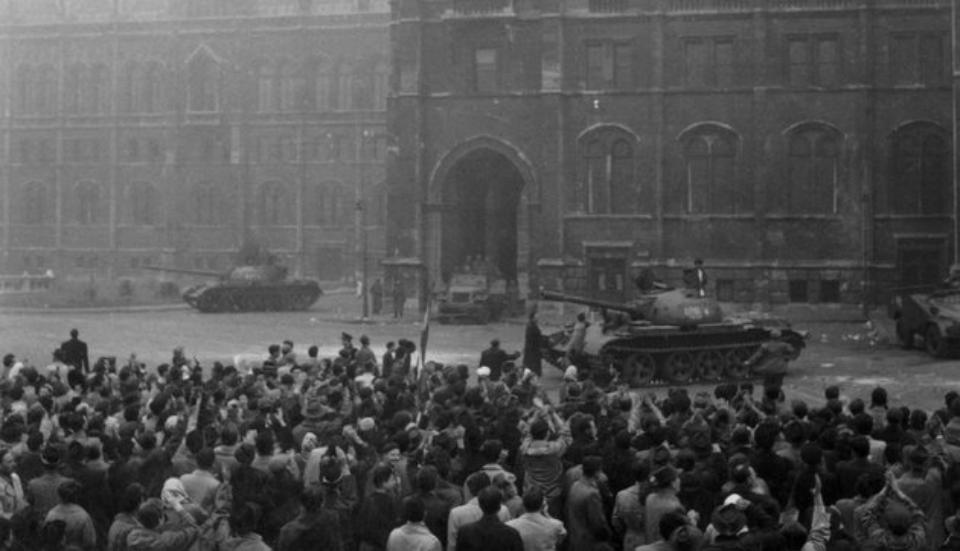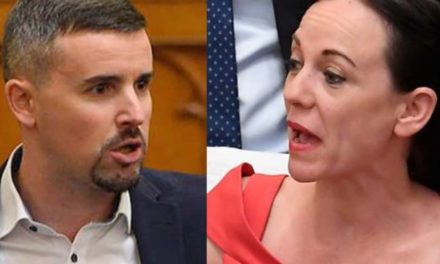As I write these lines, the war between Ukraine and Russia is going on. And in the meantime, some are citing 1956 parallels to current events. They do this primarily for political purposes, perhaps driven by their conviction that Hungary should do much more on the Ukrainian issue. Wrapping up this problem would go a long way, and it is highly doubtful that making analogies, especially bad analogies, would bring us any closer to objectivity.
Obviously, politics and science are completely different, but perhaps on October 23, 2022, it is worth briefly analyzing the international connections and also what exactly the Hungarian youth wanted on October 23, 1956 in a demonstration that, according to their intentions, was not at all wanted to take bloody satisfaction for the events after 1945. In fact, we cannot even claim that the young people marching in Debrecen and Budapest that day wanted to join the Western world. Even before the revolution, the student organization MEFESZ, established in Szeged and independent of the Hungarian Workers' Party, was not created to serve the interests of the Anglo-Saxon world.
On October 22, 1956, the students of the Budapest University of Technology formed their own MEFESZ organization, guided by the Szeged idea, and accepted the 16 points, which did not say a single word about the Hungarian youth's plan for Hungary's possible western orientation, because they did not want such an orientation.
They simply wanted to do politics "only" on the basis of equality, or rather to be friends with Moscow and all nations. They wanted independence, while not wanting to return to the politics of the Horthy era. In fact, the image of a third passenger Hungary emerged from their demands. It never occurred to them to return the property to the representatives of the previous era or even to the church. They simply wanted a country of their own that could manage its own affairs independently.
In addition, they also offered a compromise to the communist leadership, the young people knew exactly that the maximum they could go without being accused of any fascists was if they spoke out for Imre Nagy, in his favor, and envisioned the development with him. In the beginning, the Polish changes were considered the guiding principle. They were sober and quite determined.
According to our current knowledge, we can say that before 1956 the intelligence agencies of the United States of America did not expect any movement in Hungary at all. The country was considered a part of the Soviet sphere of interest, whose inhabitants had essentially surrendered to Moscow and had to accept the immutability of their situation.
Neither English nor French politics expected Hungary to cover the communist domino. The political leaders of these states merely exploited the situation to the extreme.
- On October 22, the Israeli, French and British delegations sat down to negotiate in Sèvres and agreed on the plan for the invasion of Egypt. They did this in response to the policies of Egyptian President Nasser. They did not accept that the Egyptian president, as the leader of a country that considered itself independent, nationalized the Suez Canal and then turned against the Western powers. All of this harmed their commercial interests and challenged both British and French superpower ideas.
They wanted to start the military intervention planned at the Sèvres negotiations as soon as possible. Due to the Polish political crisis, they felt that the Soviet Union would be unable to meaningfully intervene on Nasser's side. They had already decided the matter when they found out that in the meantime the uprising against the communist dictatorship had also broken out in Hungary.
The US State Department did not like the fact that the majority of young Hungarians aimed to achieve Austrian neutrality. However, this is why young workers, mostly under the age of twenty-five, took up the fight with the communist state defense, which in Debrecen already on October 23, 1956 - even before the clashes in the capital - directed volleys of fire at the unarmed young people, and then in Budapest with the Soviet troops who intervened in the meantime. to armed conflicts.
The Russians should go home, that was the general opinion, but they did not shout for the American army or NATO to come. Of course, they hoped, especially after November 4, 1956, that the UN troops would just arrive and prevent the destruction of the Soviet army, and Hungary might get a chance for independence.
The United States did not need an independent Hungary, rather they were thinking about Budapest, which belonged to their sphere of interest.
They preferred to wait and in the meantime watched the reprisals and the rise of János Kádár. In the meantime, they regretted what had happened, and as long as it was in their interest, they condemned the new, but in many respects old, communist Hungary. In essence, diplomatic relations between Budapest and the Western world were frozen for a few years. No one took on the risk of the Third World War for a country with a small population even by European standards. Many of the young Hungarians left the country, they were undoubtedly helped to integrate into the West. Their talent and willingness to act meant serious capital there and resulted in an eternal shortage here.
Source and full article: Magyar Hírlap/János Rácz
Featured Image: Wikipedia













